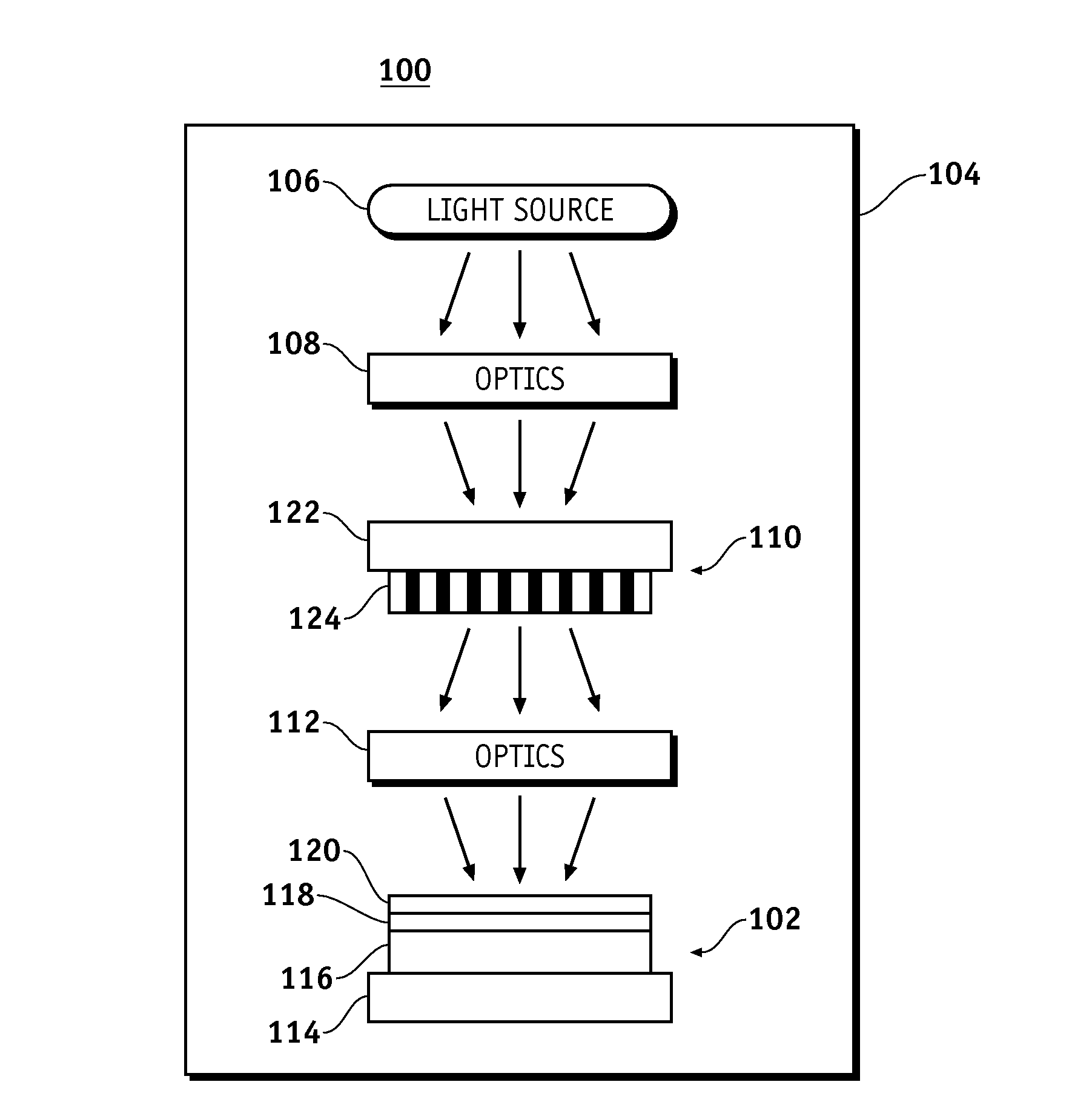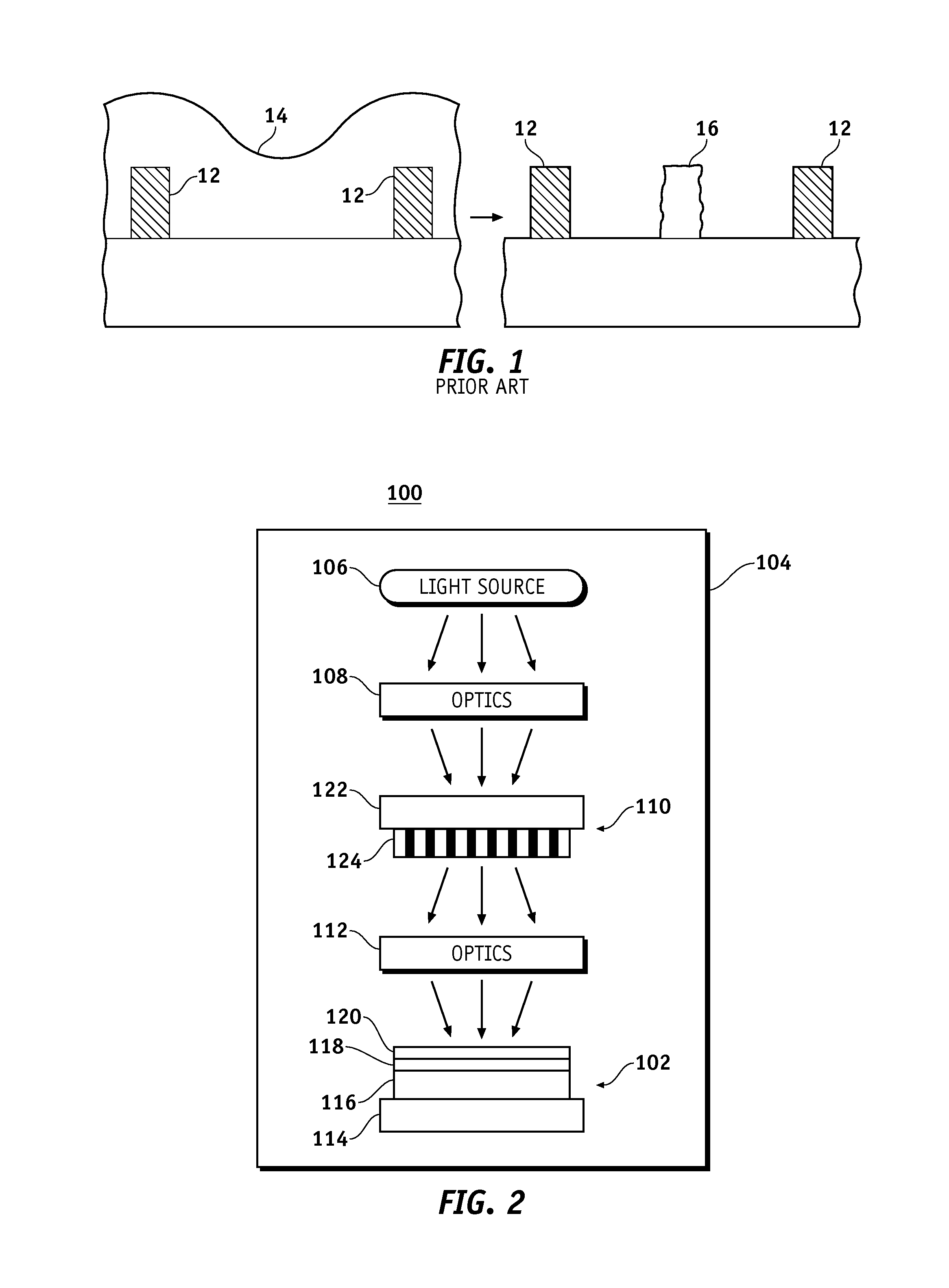High fidelity multiple resist patterning
a multi-resist patterning and high-fidelity technology, applied in the field of integrated circuit (ic) fabrication, can solve the problems of affecting the manner in which light is exposed, the circuit dimensions and device features continue to shrink, and the optical effect is adversely affected
- Summary
- Abstract
- Description
- Claims
- Application Information
AI Technical Summary
Benefits of technology
Problems solved by technology
Method used
Image
Examples
Embodiment Construction
[0016]The following detailed description is merely illustrative in nature and is not intended to limit the embodiments of the invention or the application and uses of such embodiments. For the sake of brevity, conventional techniques and technologies related to photolithography, photoresist material composition, and semiconductor device fabrication may not be described in detail herein.
[0017]FIG. 2 is a schematic representation of a lithographic system 100 for patterning a wafer 102. Lithographic system 100 includes a chamber 104, a radiation source 106, a condenser lens assembly 108 (labeled “Optics” in FIG. 1), a mask or a reticle 110, an objective lens assembly 112 (labeled “Optics” in FIG. 1), and a stage 114. Lithographic system 100 is configured to transfer a pattern or image provided on mask or reticle 110 to a target material or surface of wafer 102. Lithographic system 100 may be a lithographic camera or stepper unit. For example, lithographic system 100 may be an XT1400 se...
PUM
 Login to View More
Login to View More Abstract
Description
Claims
Application Information
 Login to View More
Login to View More - R&D
- Intellectual Property
- Life Sciences
- Materials
- Tech Scout
- Unparalleled Data Quality
- Higher Quality Content
- 60% Fewer Hallucinations
Browse by: Latest US Patents, China's latest patents, Technical Efficacy Thesaurus, Application Domain, Technology Topic, Popular Technical Reports.
© 2025 PatSnap. All rights reserved.Legal|Privacy policy|Modern Slavery Act Transparency Statement|Sitemap|About US| Contact US: help@patsnap.com



